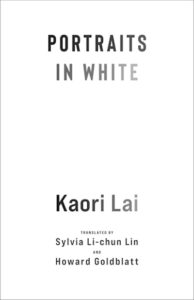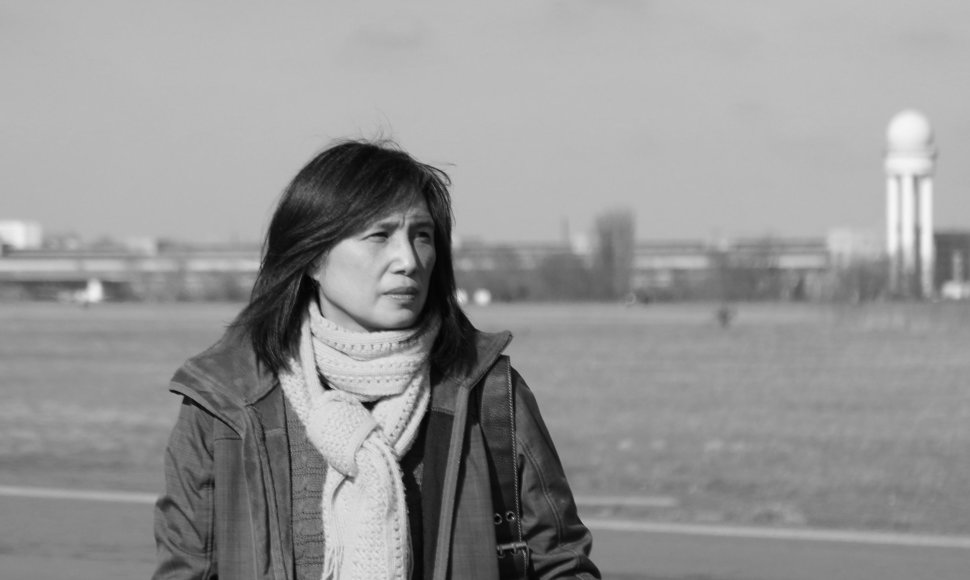From a general historical perspective, the current confrontation between mainland China and Taiwan is not difficult to explain. By the end of the 19th century, Qing Dynasty was teetering on the brink of collapse. Territories were carved out and handed over to foreign colonizers after failed battles. Taiwan was ceded to the Empire of Japan in 1895.
Fifty years later, following Japan’s surrender in World War II, Taiwan was returned to China where the Communists and the Kuomintang were however fighting a civil war for dominance. The defeated Kuomintang withdrew to Taiwan in 1949, proclaiming themselves as China’s legitimate government.
From the perspective of local Taiwanese, the rule of the Kuomintang government was colonization in disguise. The regime enforced an imagined nation-state identity to prepare for retaking the mainland. They declared Martial Law, banning use of spoken Taiwanese and indigenous languages in schools, and appointed only those of mainland Chinese descent to important government positions. They vehemently suppressed political opposition—many citizens were arrested, imprisoned, or disappeared during the period from 1949 to 1987, which came to be known as the White Terror.
Lai keeps political violence and trauma largely in the background.

Kaori Lai’s Portraits in White contains three thematically linked novellas. All three protagonists grew up in that period. On the surface, Mr Ch’ing-chih, Ms Wen-hui, and Miss Casey can be seen as representatives of conformers, misfits, and the displaced subjects of the Kuomintang regime.
Ch’ing-chih, a native of a village in southern Taiwan, returns home to teach after serving in the military and being educated in the Kuomintang stronghold in the north. In his letters home, he complains about his wife’s disagreements with his mother but never about the government propaganda that he is forced to memorize. As a conformer, his life may appear as uneventful as that of Stevens in Ishiguro’s The Remains of the Day. Like Stevens, Ch’ing-chih’s sustains a tranquil facade by suppressing his independent thoughts.
Wen-hui receives her work training as a housekeeper through a Japanese family during colonization. As a result, she speaks Japanese and Taiwanese, but not Mandarin. She can prepare Japanese food, but not mainland Chinese cuisine. Despite her dedication and diligence, she has difficulty finding employers.
Casey is the only protagonist from the north. Growing up alongside the sons and daughters of intellectuals who retreated to Taiwan after 1949, she commands superb Mandarin and has easier access to the best education Taiwan offered at the time. Later, she furthers her studies overseas and eventually settles down in Berlin where the wall ironically reminds her of the divisions in her homeland.
Unlike some other narratives that foreground political violence and trauma during the White Terror, Lai keeps them largely in the background. Two of Ch’ing-chih’s childhood friends, however, have their lives reshaped by the regime. Once a lively and kind daughter of a sundry shop owner, Ch’un-ho absorbs patriotic propaganda after working on the military front line. Chang Kuang-ming—once a young poet scolded by his military supervisor for lacking “the notion of country and its people” and not sharing “the hatred of the enemy”—loses his mind and becomes an alcoholic after his political persecution. Dr Hsiao, the employer who eventually hires Wen-hui, loses his friends and youthful energy after sharing his political views on TV. Ah-ch’en, Casey’s fellow Taiwanese friend in Europe, sacrificing five years of his prime life in prison for attacking a Taiwanese politician to protest pervasive surveillance.
In the novella, Ah-ch’en’s is the only voice of a political activist:
I wasn’t a very talented person, but I had guts. In any revolution, someone has to sacrifice his life, so why not me? … Please forgive me. At times my mind is in turmoil, which in a way may be the real prison.
The last sentence troubles Casey despite her own lesser and more reluctant political engagement. By tracing Casey’s life instead of An-ch’en’s, Lai reveals that under the White Terror, whether one takes a side or tries to stay away from politics, life paths are narrowed into only a few options; one is forced to live with an imprisoned mind.
The book’s beauty lies in its attention to small, private moments.
Some of the most touching scenes occur when old friends reunite, such as when Ah-ch’en invites Casey to visit his “little farm” on the outskirts of Brandenburg thirty years after his political action. Ah-ch’en has changed into a different person, content with fresh produce and family life. Before Casey departs, he makes sure to burn the letter containing his youthful political voice. It is a symbolic gesture. A few years after the martial law was lifted in 1987, Taiwan embraced democracy with its first direct presidential election. For the younger generation, the life of Casey’s generation is relatively unkown—they do not talk about politics with their children; and their children assume they protect themselves by avoiding political action. Or, if they get involved, the younger generation derides them with the misnomer “Old Tai-tu”, suggesting their political views are outdated and irrelevant.
The book’s beauty lies in its attention to small, private moments—letters, films, songs, conversations in languages where the speakers feel safe. In the novella “Ms. Wen-hui”, for example, Wen-hui’s sentiments are conveyed through her shifting responses to Taiwanese actress Chang Mei-yao.
As a young woman, Wen-hui finds affirmation of her identity in their shared Taiwanese aboriginal descent and in lingering traces of Japanese colonization, as seen in names:
Chang Mei-yao’s original name was ふみえFumie. In those days, many girls shared that name, although with a host of different Chinese characters. In Japanese, Wen-hui was Fumie, Chang Mei-yao was Fuzhi (also Fumie). But she was so slim, so refined, with a gentle temperament and a pair of limpid eyes, that changing it to Mei-yao (Jade Beauty) made perfect sense.
Years later, after her husband’s death, the middle-aged Wen-hui encounters Chang again on screen: “Chang Mei-yao reappeared in Call of the Mountains … Once again, Mei-yao spoke Mandarin, and once again she played the role of a daughter.” This time, however, Wen-hui is drawn not to Chang, but to her co-star K’o Jun-hsiong, who “ran in the rain to get a doctor for Mei-yao’s mother.”
Lai renders Wen-hui’s life with historical precision. Deprived of higher education and excluded from public institutions, Wen-hui experiences political and social change primarily through popular cinema. Chang ceases to resonate with her for both political and personal reasons—politically, Chang no longer embodies the shared identity Wen-hui once cherished; personally, while Wen-hui has aged into motherhood and widowhood, Chang’s image on screen remains perpetually youthful. The novella never directly states that Wen-hui feels sad or disappointed. Even her husband’s death “didn’t seem to” sadden her. Yet, piecing together these subtle details, a portrait emerges of a woman numbed by changes beyond her control, who has quietly learned to endure.
Portraits in White shifts the lens toward the quieter, more uncertain lives caught between silence and survival.
Sylvia Li-chun Lin and Howard Goldblatt skillfully retain these subtleties, preserving the multilingual references and tonal shifts. The book is not an easy read, but it is a rewarding one, particularly when readers ponder the seemingly odd word choices. Why, for example, is Casey called “Miss” even though she had a loving German husband who died young? One interpretation is that, like Ms Wen-hui, Miss Casey reflects a truer self—an identity not erased by politics, gender roles, or social expectations.
Kaori Lai’s Portraits in White thus shifts the lens away from heroic resistance or overt political violence to the quieter, more uncertain lives caught between silence and survival. The White Terror persists not only in prisons and protests, but also in the everyday compromises of those who lived through it.


You must be logged in to post a comment.